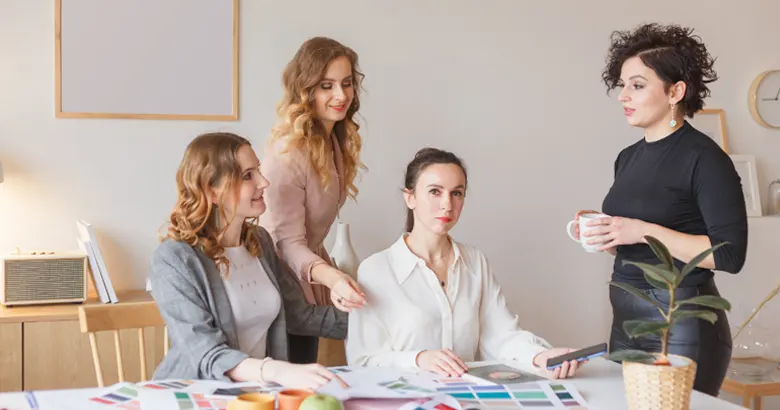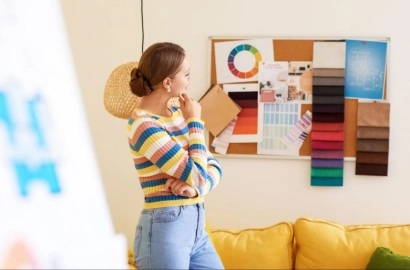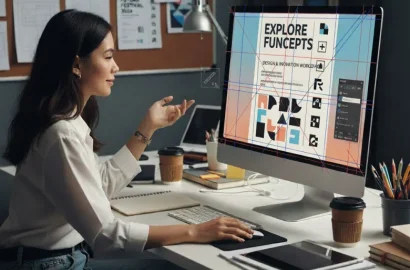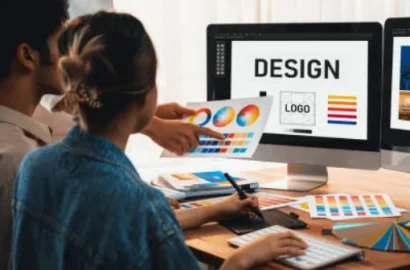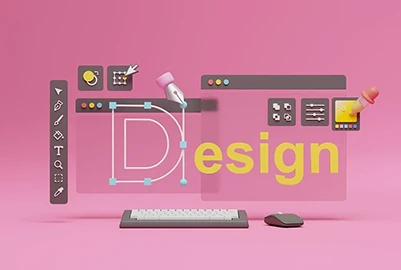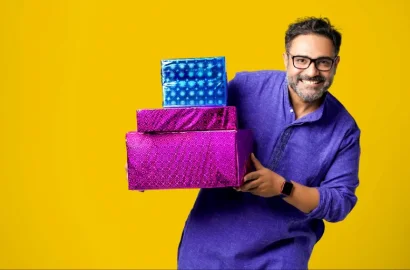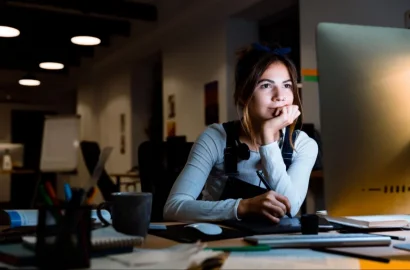Are you seeking colour inspiration for your next project? Discover some of the most beautiful colour combinations in this guide.
Have you noticed how some colour combinations really pop, while others have a more calming influence?
Different colours interact to achieve different visual effects. Some colour pairings are bright, bold, and high-contrast. Others are subtle, elegant, and harmonious, achieving perfect colour harmony. It all depends on the relationship between the colours involved—as determined by their position on the colour wheel.
So what are the different possible colour combinations? And how do you figure out which pairings work best for certain design contexts?
All will become clear in this guide. Keep reading to uncover:
- What is colour theory and the colour wheel?
- What are the different types of colour palettes?
- 10 colour combinations to inspire your next design (with examples)
- Learn more about graphic design
Are you ready to master the art of colour combinations? Let’s begin with some fundamental theory.
1. What is Colour Theory and the Colour Wheel?
Before we explore specific colour combinations, it’s important to understand why certain colours work well together and why different pairings achieve different effects.
Why is it that some combinations are vibrant and energetic while others are subtle and elegant? Why do some colour pairs flow effortlessly while others seem to clash?
It all comes down to colour theory and the colour wheel.
What is colour theory?
Colour theory is the study of colour and how it can be used to achieve different visual effects.
It looks at the anatomy and properties of colour and considers how different colours interact to create contrast, balance, harmony, or visual intrigue—whatever aesthetic you want to achieve with your designs!
Colour theory also incorporates colour psychology; the study of how different colours influence our mood and emotions. For example: a warm, vibrant colour palette built on orange and yellow hues might be associated with joy, positivity, and optimism. A cool mint green palette, on the other hand, may evoke a sense of calm, serenity, and freshness.
Colour psychology is an important tenet of colour theory because it considers how certain colours make people feel. This helps designers make appropriate colour choices—reflecting on what a particular colour palette says about the brand personality, and how it’ll be perceived by the target audience.
Altogether, colour theory helps designers understand the impact of colour and why different colour combinations can achieve such varying results. It also provides practical guidance for choosing appropriate colour palettes depending on the context.
What is the colour wheel?
The colour wheel is a circular diagram divided into twelve segments. Each segment features a primary, secondary, or tertiary colour and their respective tints, shades, and tones. On one side of the colour wheel, you’ll find warm colours like red, orange, and yellow. On the other side, you’ll find cool colours such as blue, green and purple.
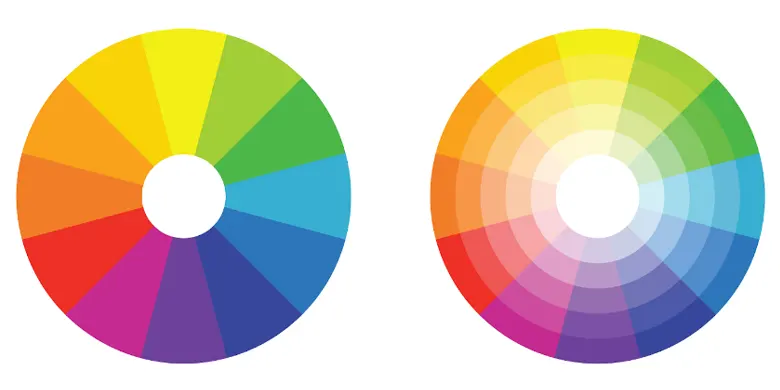
The colour wheel is a fundamental concept in colour theory—and an extremely useful tool. It shows the relationship between different colours, enabling you to build effective colour palettes that achieve the desired effect.
If you know your way around the colour wheel, you’ll quickly get to grips with colour combinations and how to pair different colours to create harmony, contrast, colour balance, and more.
We’ve only briefly introduced the colour wheel here. For a hands-on exploration, try creating your own colour wheel from scratch with our step-by-step guide.
How do colour theory and the colour wheel help with choosing colour combinations?
We’ve introduced two key concepts: colour theory and the colour wheel. But we’re here to talk about colour combinations! So how do the three relate?
When choosing colour combinations for a particular design project, you’d usually be driven by several goals:
- To make some kind of visual impact—be it intriguing and eye-catching or subtle and elegant
- To convey and communicate the brand’s personality and values
- To evoke a particular feeling, mood, or emotion in the target audience
- To guide the user and facilitate their interaction with the design—especially in the case of web and digital design
Because colour serves both a visual and functional purpose, you can’t just throw random colours together and hope they work. Colour combinations must be carefully chosen based on the design context, the medium, the brand, and the target audience.
To make effective colour choices, designers adhere to the guidelines and principles set out by colour theory and the colour wheel. We can combine different colours to achieve certain effects based on where different colours are positioned—and therefore how they relate to one another—on the colour wheel.
For example: colour theory tells us that purple and yellow create high contrast when used together. This is because, on the colour wheel, they sit opposite each other—making them a complementary, and therefore high-contrasting, colour combination. Blue and green, on the other hand, are a more harmonious combination because they sit next to each other on the colour wheel.
As such, colour theory acts as a framework that guides designers in their choice and application of colour—enabling them to choose colour combinations that are visually appealing, perfectly on-brand, and evoke the desired mood or emotions. For a deeper understanding of how colour theory is applied to projects, take a look at AND learner Akhil N’s Brand Identity Project.
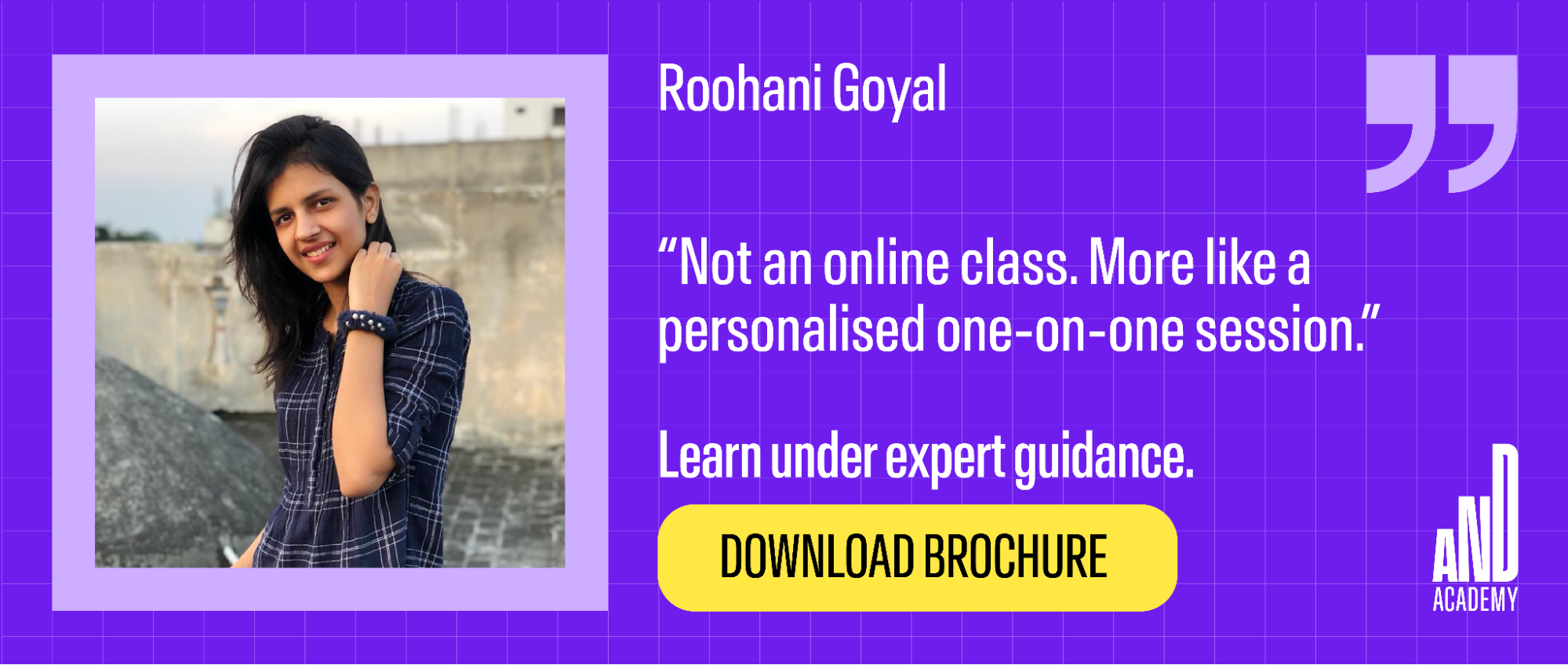
2. What are the Different Types of Colour Palettes?
There are six main types of colour palettes (or colour schemes). These are:
Monochromatic: Monochromatic colour combinations are based on a single hue and its various tints, tones, and shades—i.e. lighter and darker variations of that hue.
Analogous: Analogous colour schemes combine colours that are next to or near each other on the colour wheel. These colour combinations are especially harmonious.
Complementary: Complementary colour combinations are directly opposite each other on the colour wheel and help achieve high contrast.
Split-complementary: Split-complementary palettes comprise a base colour and the two colours found on either side of its complementary colour on the colour wheel.
Triadic: Triadic colour combinations involve three colours that are evenly spaced around the colour wheel.
Tetradic: Tetradic colour schemes comprise two pairs of complementary colours.
Within these six types of colour schemes, there are endless possible colour combinations. Let’s explore just some of those possibilities now.
3. 10 Colour Combinations to Inspire Your Next Design (with examples)
i. Orange and Prussian blue
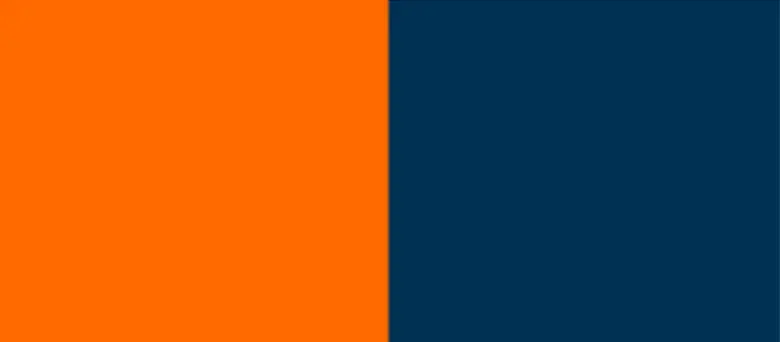
This bold combination of orange and Prussian blue forms a complementary colour palette. Used together, these colours create strong visual contrast and intensity for a vibrant, energetic feel. This colour combination works well for retro logo design, eye-catching posters, and bold book covers.
Here’s an example of this colour combination in action:
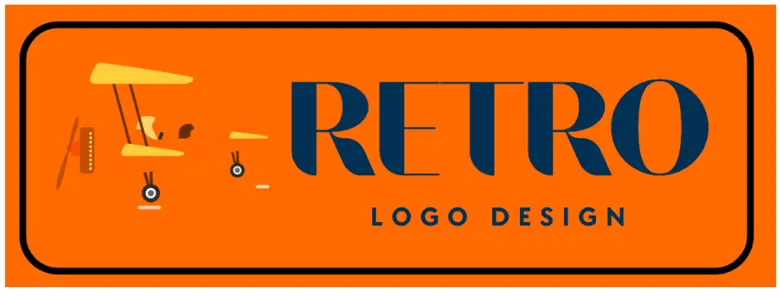
Want to try this colour combination yourself? Here are the hex codes you’ll need:
- Orange: #FF6A00
- Prussian blue: #003153
ii. Magenta and yellow

Another striking colour combination: magenta and yellow. This high-contrast colour pairing is modern, energetic, and attention-grabbing. We can see these colours working well on websites, advertising billboards, brochures, and magazines.
Here’s an example of this colour combination in action:

Want to try this colour combination yourself? Here are the hex codes you’ll need:
- Magenta / pink: #D1216C
- Yellow: #FFFF00
iii. Seafoam green monochrome
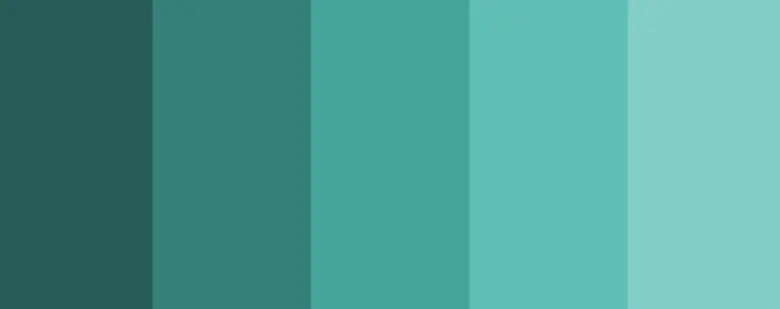
This monochromatic colour palette comprises various shades of seafoam green—a colour typically associated with the sea, nature, calmness, and tranquillity. In combination, these harmonious hues evoke a soft and soothing aesthetic—ideal for interior design and wellness-related branding.
Here’s an example of this colour palette in action:
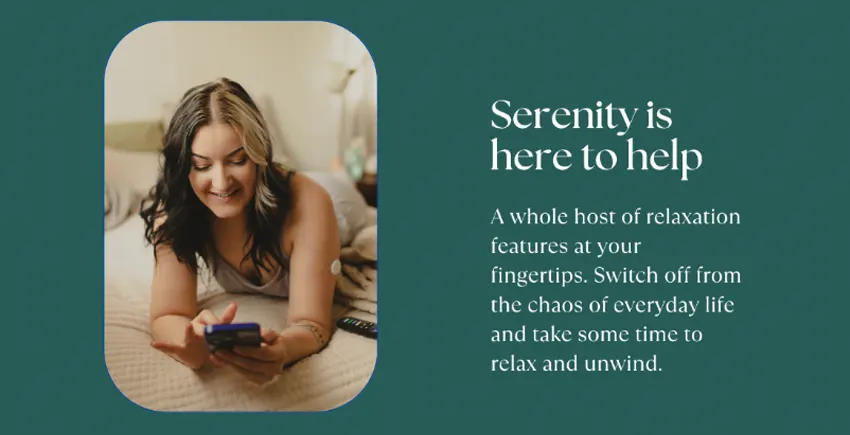
Want to try this colour combination yourself? Here are the hex codes you’ll need (from left to right):
- #285C57
- #368079
- #4DB6AC
- #5FBEB5
- #82CEC6
iv. Yellow, blue, red, pink, and light blue
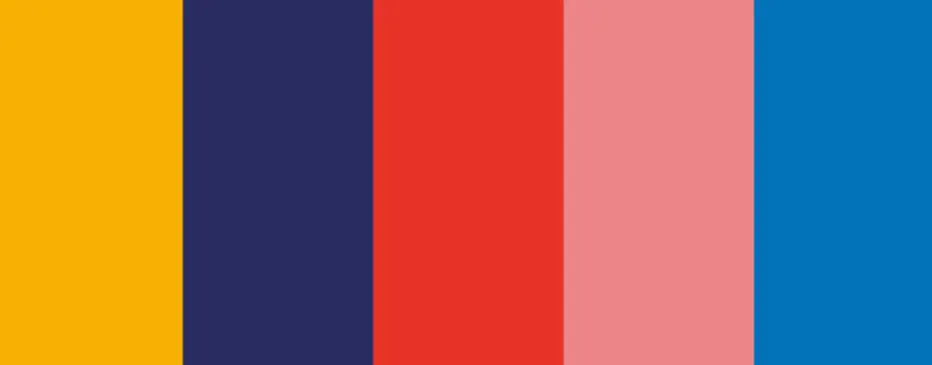
We’ve taken this vibrant colour combination straight from the cover of Bernadine Evaristo’s Booker Prize-winning novel Girl, Woman, Other. The yellow, blue, and red are vibrant and rich, while the lighter pink and blue shades add a touch of softness to the palette. The overall aesthetic is one of energy, dynamism, contrast, and depth—ideal for book covers, websites, event posters, and magazines.
Here’s the colour palette in action on the front and back covers of Girl, Woman, Other:
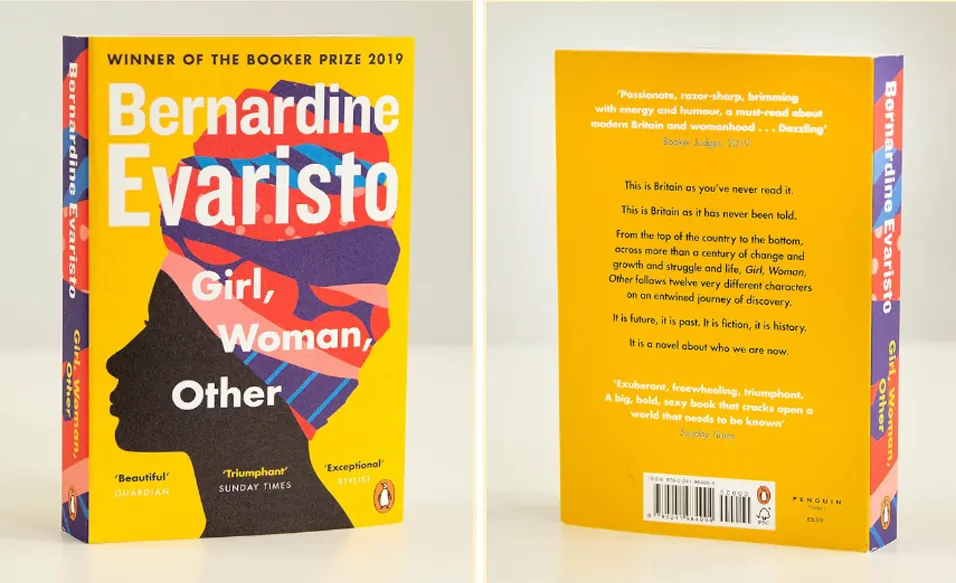
Want to try this colour combination yourself? Here are the hex codes you’ll need:
- Yellow: #F8B102
- Navy: #292C62
- Red: #E63327
- Pink: #EC8588
- Light blue: #0372BA
v. Soft pink and green
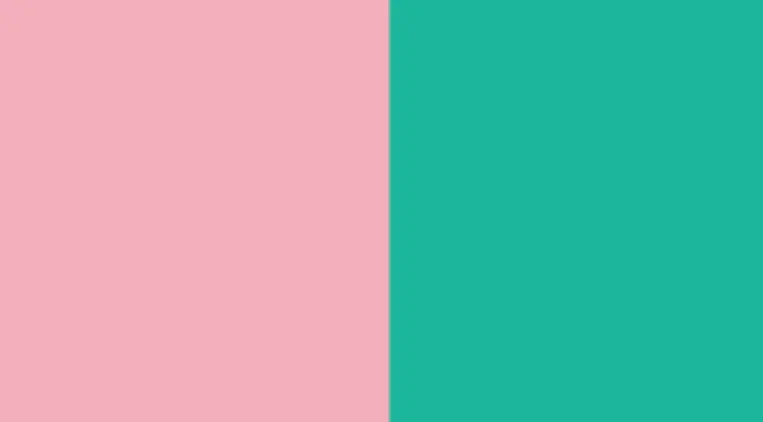
Looking for a colour combination that’s both sweet and fresh? Try mixing this soft pink with vibrant green. This colour pairing isn’t technically harmonious, but there’s no denying that they work well together. They provide enough contrast to be eye-catching while pleasantly balancing each other out. The overall aesthetic is playful, fresh, and modern.
Here’s an example of this beautiful pink and green colour combination in action:

Source: I Dew Care
Want to try this colour combination yourself? Here are the hex codes you’ll need:
- Pink: #F3AFBB
- Green: #1CB69B
vi. Raspberry and chocolate brown
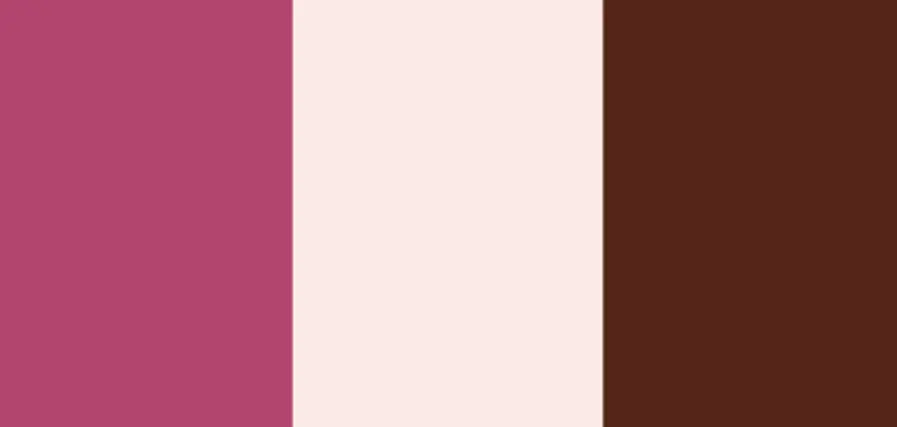
This raspberry pink and chocolate brown combination is almost good enough to eat! The light pink harmonises beautifully with the raspberry, helping to soften the intense richness of both the raspberry and the brown. This colour combination speaks of luxury, decadence, and opulence. We can see it working well for cosmetics and culinary brands alike.
Here’s an example of this colour combination in action:

Want to try this colour combination yourself? Here are the hex codes you’ll need:
- Raspberry: #B2456E
- Light pink: #FBEAE7
- Chocolate brown: #552619
vii. Yellow and coral

If you’re looking for a warm and joyful colour combination, yellow and coral are a perfect match. This complementary colour palette achieves high contrast and exudes vibrancy, optimism, and energy. It’s an ideal combination if you want to convey a sense of youth and positivity.
Here’s an example of this colour combination in action:

Want to try this colour combination yourself? Here are the hex codes you’ll need:
- Yellow: #FFD746
- Coral: #FF6B6B
viii. Navy blue, steel grey, and light blue
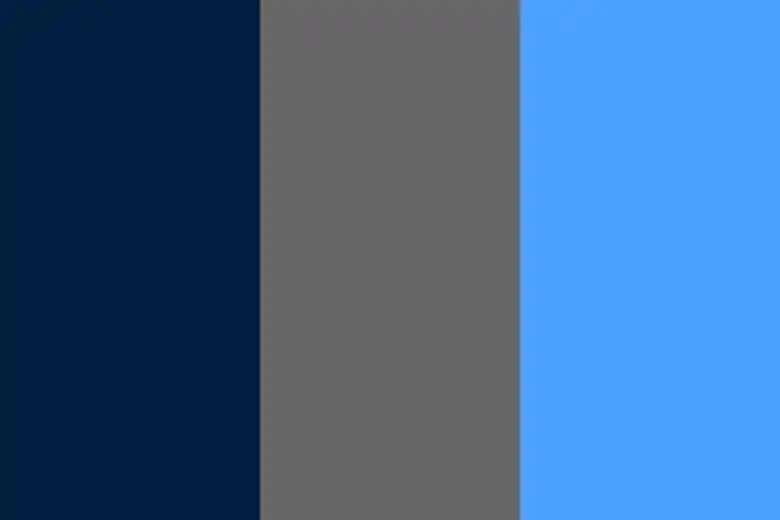
Are you looking for a colour combination that exudes authority and professionalism? Then look no further than this navy and steel grey palette. Ideal for corporate brands in tech, finance, cybersecurity, and similar, this powerful colour scheme is sleek and harmonious. For contrast, pair navy blue elements with a white background.
Here’s an example of this colour combination in action:

Want to try this colour combination yourself? Here are the hex codes you’ll need:
- Navy Blue: #001F3F
- Steel Grey: #666666
- Light Blue: #4DA1FF
ix. Teal and tangerine

Teal and tangerine are found on opposite sides of the colour wheel, making for a visually striking, high-contrast combination. A teal and tangerine-based colour palette evokes warmth, vibrancy, and playfulness—ideal for creative and modern brands. This colour combination works well for bold designs such as book covers, posters, and t-shirts.
Here’s an example of this colour combination in action:
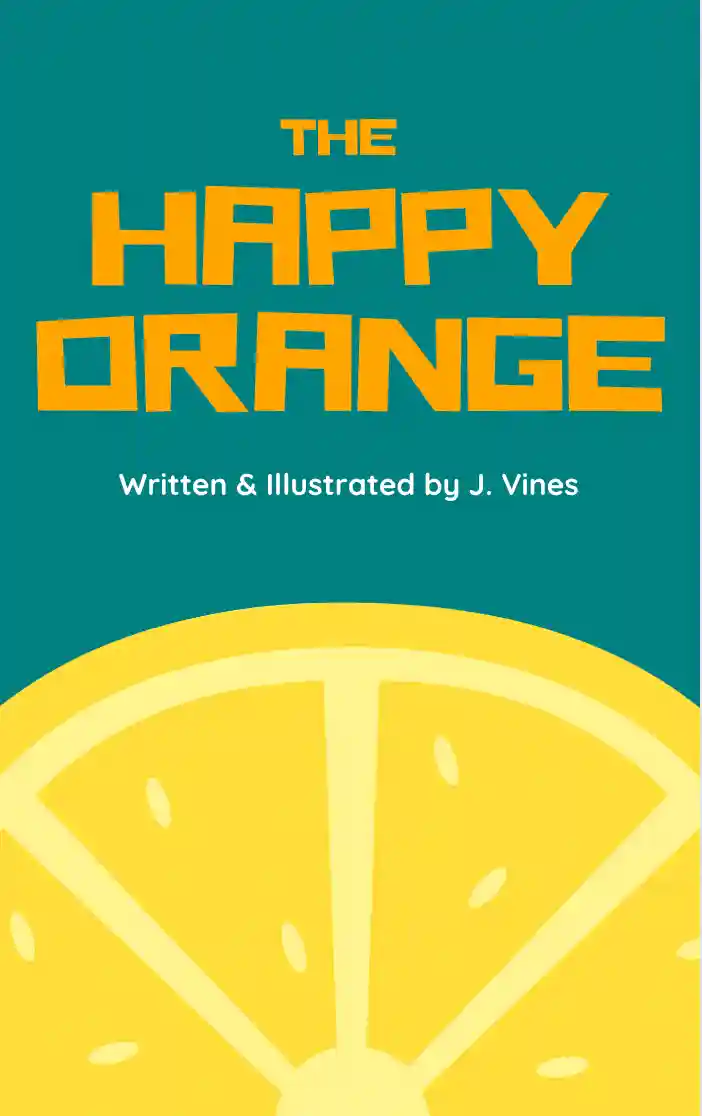
Want to try this colour combination yourself? Here are the hex codes you’ll need:
- Teal: #008080
- Tangerine: #FFA500
x. Hot pink and blue

Hot pink is vibrant, fun, and energetic. Deep blue, on the other hand, is calming and reliable. Put them together and you’ve got a dynamic colour duo. In combination, hot pink and dark blue provide plenty of contrast and attention-grabbing intrigue. There’s something retro and nostalgic about this colour palette, and it lends itself to all kinds of design contexts—from event invitations and product packaging to album covers, posters, and signage.
Here’s an example of this fun colour combination in action:

Want to try this colour combination yourself? Here are the hex codes you’ll need:
- Hot pink: #FF69B4
- Blue: #224193
4. Learn More About Graphic Design
We hope our colour combinations have inspired you! There are limitless possibilities when creating a colour palette, so be sure to explore and experiment until you’ve got it just right. If you’d like to learn more about how to use colour in your work, check out this step-by-step guide to choosing a website colour palette.
Colour also finds widespread applications across graphic design and is just one tool used by graphic designers to create powerful designs and brand identities. For more graphic design tools and tips, check out these resources:
- Fundamental Graphic Design Principles and How to Apply Them
- Typography Design 101: The Key Elements, Rules, and Principles of Good Typography
- How to Design a Logo: Your Ultimate Step-by-Step Guide
Next Steps
If our guide to colour combinations successfully has you interested in the wider field of graphic design, here are some other resources that can further your understanding:
- Watch this session by design veteran and AND’s Academic Head, Prachi Mittal, and our Course Lead, Soumya Tiwari.
- Talk to a course advisor to discuss how you can transform your career with one of our courses.
- Pursue our Graphic Design courses – all courses are taught through live, interactive classes by industry experts, and some even offer a Job Guarantee.
- Take advantage of the scholarship and funding options that come with our courses to overcome any financial hurdle on the path of your career transformation.
Note: All information and/or data from external sources is believed to be accurate as of the date of publication.

